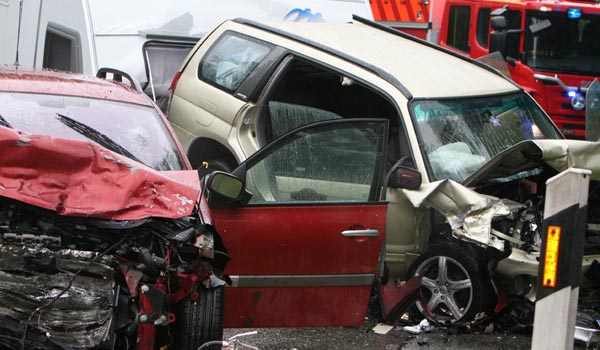Teen Driving: Loud Talking & Rowdiness Are Risky Distractions

Although texting and talking on the phone can be hazardous for young drivers, old-fashioned distractions such as loud conversations and rowdy passengers may be more likely to lead to car crashes and other dangerous driving situations, a new study suggests.
Teen drivers in the study were six times more likely to have a serious driving incident — such as a collision, near collision, or loss of control — when there was a loud conversation in the car, compared to when there were no loud conversations.
And teens were about twice as likely to need to stop or slow the car quickly (hard braking) when there were rowdy passengers, compared to when there were no rowdy passengers, the study found. [3 New Dangerous Drug Habits in Teens]
While use of electronic devices was a more common distraction, it was not linked with serious accidents, the study found.
The findings underscore the importance of laws in many states that prohibit newly licensed drivers from having more than one young passenger in the car, said study researcher Robert Foss, of the University of North Carolina Highway Safety Research Center. Such laws "increase the safety of drivers, their passengers and others on the road by reducing the potential chaos that novice drivers experience," Fosssaid in a statement.
It may be that factors that the driver can control — such as when they look at their phone or adjust controls on the dashboard — are less likely to cause dangerous incidents than factors that are out of the driver's control, such as passenger behavior, the researchers said.
However, texting and other distractions can still be dangerous. Divers were three times more likely to look away from the road — a very risky driving behavior — when they used an electronic device, compared to when they did not use one. Loud conversations and rowdy passengers were less likely than electronic device use to cause the driver to look away from the road.
Get the world’s most fascinating discoveries delivered straight to your inbox.
The study involved 52 high-school aged drivers in North Carolina, the majority of whom had just received their license.
The participants had small cameras mounted in their cars, which recorded video and audio, as well as the car movements. The cameras recorded continuously, but only saved information when the force of the car's movement reached a certain threshold, triggering the camera to save a 20-second clip of the teens' driving. The cameras captured moments of routine driving, as well as risky driving. Participants were told at the study start that they would not receive feedback about their driving behaviors.
The cameras captured more than 24,000 clips of the young drivers (about 460 clips per driver), over a six-month period.
Use of electronic devices was the most common distracted behavior, seen in about 6.7 percent of clips, followed by adjusting car controls (6.2 percent) and grooming (3.8 percent).
About a third of the clips showed other passengers in the car, and of these clips, 12.6 percent had a loud conversation and 6.3 percent had rowdy passengers. Serious incidents were not very common, making up less than 1 percent of clips.
Because the study was small, and involved people who agreed to participate in a driving study, it's not clear how well the findings translate to all teen drivers, the researchers said. In addition, it's possible the presence of the camera influenced driving behavior. However, the teens were not aware of when the cameras were saving information, and other studies suggest that people who have monitoring devices installed in their cars quickly return to their normal driving behavior, the researchers said.
A 2013 study on U.S. teen drivers found that 45 percent said they'd sent a text or email while driving at least once in the past month
The study was published April 17 in the Journal of Adolescent Health.
Follow Rachael Rettner @RachaelRettner. Follow Live Science @livescience, Facebook & Google+. Original article on Live Science.

Rachael is a Live Science contributor, and was a former channel editor and senior writer for Live Science between 2010 and 2022. She has a master's degree in journalism from New York University's Science, Health and Environmental Reporting Program. She also holds a B.S. in molecular biology and an M.S. in biology from the University of California, San Diego. Her work has appeared in Scienceline, The Washington Post and Scientific American.


